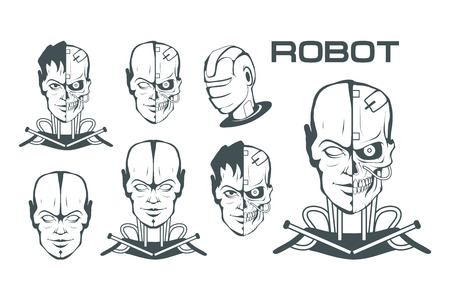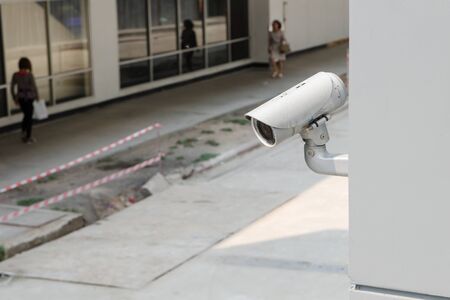1. Overview of Indian Government’s Vision for Healthcare Innovation
In recent years, the Indian government has demonstrated a progressive vision toward healthcare innovation, especially through the adoption and promotion of advanced technologies such as robotic rehabilitation. Recognising the unique needs of its diverse population—ranging from young children to the rapidly growing elderly demographic—the government has outlined policies that prioritise inclusivity and holistic wellness across all age groups. This vision is deeply rooted in India’s longstanding values of community care and accessibility, where technology serves as a bridge to equitable health outcomes. Embracing global advancements while staying true to local realities, the government’s approach integrates digital health initiatives, public-private partnerships, and financial incentives to make cutting-edge rehabilitative solutions available in both urban metros and rural heartlands. By fostering an ecosystem where innovation meets compassion, India is not just modernising its healthcare system but also ensuring that the benefits of technological progress reach every citizen, enabling long-term wellness and improved quality of life for all.
Flagship Policies and Schemes Encouraging Robotics in Healthcare
The Indian government has been proactive in launching flagship policies and schemes to accelerate the adoption of advanced technologies, including robotics, in the healthcare sector. Two notable initiatives—Make in India and the National Health Policy—have played a pivotal role in shaping the trajectory of robotic rehabilitation technologies across the nation.
Make in India: Catalysing Indigenous Innovation
The Make in India campaign, launched in 2014, aims to transform India into a global manufacturing hub. This initiative encourages both domestic and international companies to manufacture their products within the country. In the context of healthcare robotics, Make in India provides incentives such as tax benefits, simplified regulatory processes, and financial support for startups focusing on medical devices and assistive technologies. These measures not only promote local innovation but also reduce dependency on imported robotic rehabilitation solutions.
National Health Policy: Prioritising Technology Integration
The National Health Policy (NHP) 2017 underscores the importance of technology-driven healthcare delivery systems. The policy advocates for the integration of cutting-edge technologies, including robotic-assisted therapies, especially in public health institutions. By prioritising research, development, and deployment of such technologies, NHP aims to bridge gaps in accessibility and quality of care for elderly and differently-abled populations across urban and rural India.
Key Government Initiatives Supporting Robotic Rehabilitation
| Policy/Scheme | Main Focus | Impact on Robotic Rehabilitation |
|---|---|---|
| Make in India | Manufacturing & Innovation Incentives | Boosts local production of robotic devices; fosters startup growth |
| National Health Policy 2017 | Technology Integration in Healthcare | Promotes adoption of robotics for rehabilitation across public hospitals |
| Ayushman Bharat | Universal Health Coverage | Enables wider reach of advanced rehabilitation technologies through insurance schemes |
Towards Inclusive Healthcare Access
Together, these flagship policies have created an enabling environment for research institutes, private enterprises, and medical professionals to collaborate on developing cost-effective, culturally relevant robotic rehabilitation solutions. Such holistic efforts reflect the government’s vision to make advanced healthcare accessible to every Indian citizen, while nurturing home-grown technological expertise.

3. Support for Start-ups and Indigenous Innovations
The Indian government has been actively nurturing an ecosystem that encourages indigenous innovations and supports start-ups, especially in the domain of robotic rehabilitation technologies. Through various grant schemes and funding opportunities such as the Department of Science & Technology’s NIDHI program and BIRAC’s BioNEST, aspiring entrepreneurs are finding the necessary financial backing to transform their ideas into impactful solutions. Moreover, many government-supported incubators—like those housed within IITs and leading medical institutions—provide vital mentorship, technical assistance, and infrastructural resources tailored for health-tech start-ups.
Empowering Local Innovators
Recognising the unique healthcare needs of India’s diverse population, government policies emphasise the importance of homegrown solutions. By promoting Make in India initiatives and prioritising local content through schemes like Atmanirbhar Bharat, innovators are encouraged to develop cost-effective and culturally relevant robotic rehabilitation devices that cater specifically to Indian patients’ requirements. This not only enhances accessibility but also fosters a sense of pride in indigenous technological advancement.
Collaboration Opportunities
The government is also facilitating collaborations between research institutions, private enterprises, and public agencies. Platforms such as Startup India Hub and various industry-academia partnerships create networking avenues where innovators can connect with clinicians, engineers, and policymakers. These collaborations often lead to pilot projects, clinical validations, and eventual scaling up of successful prototypes into widespread clinical practice.
Ensuring Sustainability and Growth
By consistently focusing on capacity building—through hackathons, skill development workshops, and seed funding—the Indian government ensures that the momentum in rehabilitation robotics is sustained. Such holistic support gives rise to a vibrant community of start-ups ready to address both rural and urban healthcare challenges using cutting-edge technology rooted in Indian ingenuity.
4. Training and Capacity Building for Healthcare Professionals
The Indian government recognises that the successful adoption of robotic rehabilitation technologies hinges upon the availability of skilled healthcare professionals who are adept at using these advanced systems. To bridge the digital divide and ensure inclusive growth, several initiatives have been introduced to upskill medical staff across both urban centres and rural Bharat. Through targeted training programmes, the government seeks to empower healthcare workers with the competencies needed to operate, maintain, and interpret data from robotic rehabilitation devices.
Skill Enhancement Initiatives
Multiple ministries, including the Ministry of Health and Family Welfare (MoHFW) and NITI Aayog, have rolled out capacity-building schemes tailored for different tiers of healthcare professionals. These schemes focus on hands-on workshops, e-learning modules in regional languages, and collaborative training with global technology partners. The table below summarises key efforts:
| Programme Name | Target Audience | Mode of Training | Geographical Focus |
|---|---|---|---|
| Ayushman Bharat Digital Mission Workshops | Doctors & Physiotherapists | On-site & Virtual Labs | Tier-II/III Cities & Rural Districts |
| Robotics Upskilling Yojana | Nurses & Rehab Technicians | E-learning Modules (Hindi, Tamil, Bengali, etc.) | PAN India, with focus on Aspirational Districts |
| Skill India-Healthcare Collaboration | Community Health Workers (ASHA/ANMs) | Hands-on Demonstrations & Mobile Units | Remote Villages & Tribal Areas |
Ensuring Skill Transfer in Rural Bharat
Recognising the unique challenges faced by rural communities, the government is deploying mobile training labs and tele-mentoring platforms. These platforms connect rural health workers with urban experts, facilitating real-time guidance and troubleshooting. Additionally, incentives such as certification stipends and career advancement opportunities are provided to encourage participation among grassroots workers.
The Road Ahead: Sustainable Capacity Building
The emphasis on continuous professional development ensures that healthcare professionals remain updated with evolving robotic technologies. By fostering partnerships with public and private stakeholders, the government is building a robust ecosystem where knowledge transfer is not just a one-time event but an ongoing process. This holistic approach guarantees that even remote regions of Bharat benefit from cutting-edge rehabilitative care driven by robotics.
5. Public-Private Partnerships and Real-World Implementations
India’s progress in robotic rehabilitation is closely linked to the fruitful collaboration between government initiatives and private sector innovation. Through strategic public-private partnerships (PPPs), numerous pilot projects and real-world implementations have brought advanced technologies closer to those who need them most, including elderly citizens and rural communities. For instance, the Ministry of Health & Family Welfare has collaborated with leading Indian tech firms to establish robotic therapy centres in government hospitals under the Ayushman Bharat scheme. These centres leverage cost-effective, locally developed robotics to deliver physiotherapy and motor skill training for stroke survivors and accident victims.
Another notable example is the collaboration between state governments and start-ups incubated at Indian Institutes of Technology (IITs). These start-ups have received funding through government grants such as the Atal Innovation Mission and have partnered with state-run hospitals in Maharashtra and Tamil Nadu. By deploying mobile robotic rehabilitation units in tier-II and tier-III cities, they ensure that advanced therapies are not limited to metropolitan areas but reach those living in smaller towns or even villages.
Furthermore, joint ventures like the partnership between the Department of Science and Technology (DST) and multinational medical device companies have enabled capacity building through training programmes for healthcare workers. This grassroots approach ensures that medical professionals are well-equipped to operate robotic systems, fostering trust among patients from diverse backgrounds and making technology adoption smoother.
These collaborative efforts exemplify how Indian policy frameworks are not only encouraging innovation but also ensuring equitable access. By blending government support with private sector agility, India is taking significant steps toward making robotic rehabilitation a reality for all its citizens, reflecting the nation’s commitment to inclusive healthcare development.
6. Challenges and Opportunities on the Road Ahead
While government policies in India are actively nurturing the growth of robotic rehabilitation technologies, the journey toward nationwide adoption is marked by both challenges and opportunities.
Cultural Acceptance: Bridging Traditional Beliefs with Modern Solutions
One of the key barriers is cultural acceptance. Many communities across India have deep-rooted beliefs in traditional healing practices, which can sometimes create hesitation towards embracing advanced robotic solutions for rehabilitation. To overcome this, it is essential to promote awareness campaigns in local languages and collaborate with community leaders, ensuring that technology is seen as a complement rather than a replacement to holistic healing.
Digital Literacy: Empowering Users and Caregivers
Another significant challenge is the level of digital literacy, especially among rural populations and senior citizens. While urban centres may readily adapt to new technologies, people in remote areas may struggle with using digital platforms required for robotic rehabilitation. Tailored training programs, simple user interfaces, and multi-lingual support can empower patients and their caregivers to make full use of these advancements.
Policy Directions: Ensuring Equitable Access
The Indian government has made commendable strides, but future policies must focus on equitable access. This involves incentivising manufacturers to develop cost-effective devices, expanding public-private partnerships, and integrating robotic rehabilitation into public health insurance schemes such as Ayushman Bharat. Moreover, establishing standards and regulatory frameworks will ensure safety and efficacy while fostering innovation.
The Way Forward
India’s unique diversity presents both obstacles and immense potential for the adoption of robotic rehabilitation technologies. By addressing cultural nuances, enhancing digital literacy, and crafting inclusive policies, India can pave the way for every citizen—regardless of geography or background—to benefit from advanced rehabilitation solutions. The road ahead requires collaboration between government bodies, private sector innovators, healthcare professionals, and local communities to achieve a truly inclusive healthcare revolution.

